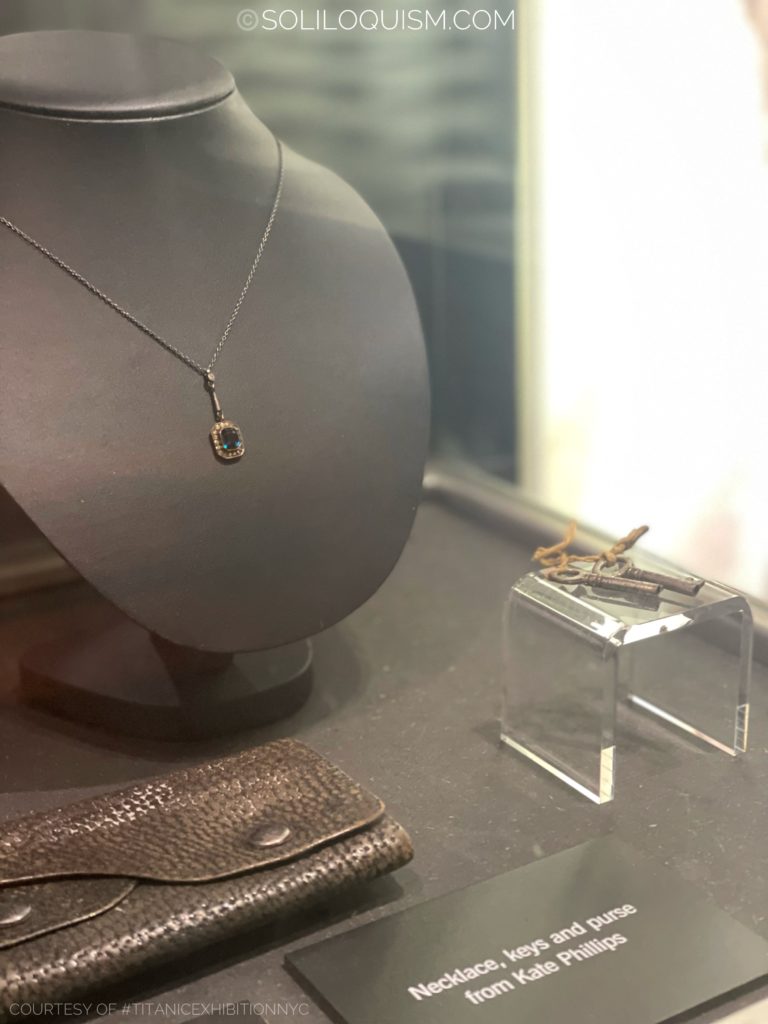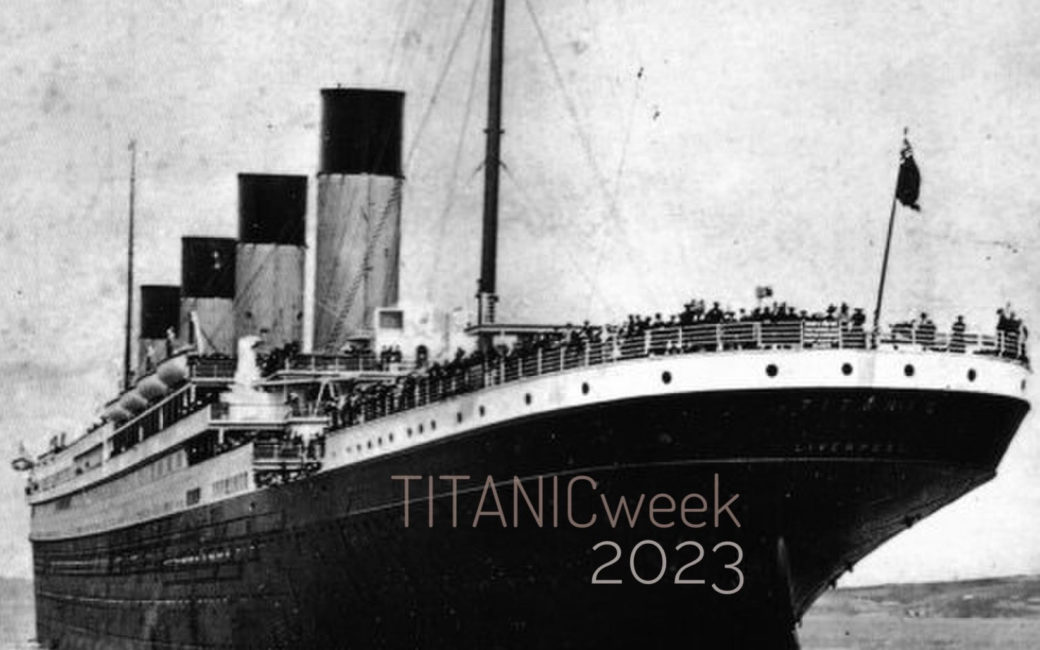"High Class Confectionery": Kate Phillips & Henry Morley
In the spring of 1912, Henry Morley sold his candy shops.
The shops, collectively called Purveyors of High Class Confectionery and owned by L. Morley Confectioners, were fine-candy stores, and they were quite successful. The businesses were profitable enough for Henry to employ multiple shop assistants.
One of those assistants was Kate Florence Phillips, with whom Henry fell in love.
And so, on April 10, 1912, Henry and Kate boarded Titanic at Southampton. Henry's brother, who had aided him in selling the Confectioneries, waved the couple on from the quay. The lovers were planning to resettle in the United States, where they could begin a life together in San Francisco.

A candy counter in St. Louis, MO, circa 1910. Courtesy of the United States National Archives & Records Administration.
But Henry had also left a life behind.
Henry Morley, who was 38 years old at the time he absconded with 19-year-old Kate, was a married man.
Henry had chosen to abandon his wife Louisa in order to elope with Kate. He had left "on holiday" under the pretense of going to a western climate in order to recuperate from an illness--and then he sold his businesses. Some funds were allocated to the continued support of Louisa and his daughter Doris; the rest of the money was intended as capital for a new shop in California, with Kate as his bride.
On March 2, 1912, Henry withdrew a large sum of money from his bank in Worcester. He spent the next month bouncing from address to address, passing Kate off as his wife.
Henry and Kate boarded with a joint Second-Class ticket under the very fake names of Mr. and Mrs. Marshall.

Titanic leaving Southampton, April 10, 1912. Courtesy of the National Maritime Museum.
How Kate and Henry spent their time during the voyage is undocumented.
While on board, or perhaps before embarking on the voyage, Henry gifted Kate with a love token he had purchased back in Britain: a silver necklace, boasting a deep-blue sapphire surrounded by diamonds. She reportedly wore it to every dinner on board, gleaming with pride.
When Titanic struck the iceberg on the night of April 14th, Henry is reported to have roused Kate from sleep. Before rushing up on deck, Henry removed Kate's necklace from a drawer and latched it around her neck.
On the boat deck, Kate wore only her cotton nightgown and her beloved necklace, and held nothing but a small seal-skin purse and her lover's arm. Henry could not swim, and he reportedly clung to Kate as they stood before the lifeboats. And then a sailor grabbed her away and forced her to board.

Kate Phillips's necklace, called the Love of the Sea. Courtesy of Titanic: The Exhibition, in NYC, November 2022.
© SOLILOQUISM
The lifeboat in question alternates between Lifeboat 11 and Lifeboat 13. It has been reported that Kate shared the lifeboat with two-month-old Millvina Dean, and that at one point, she was in Kate's arms.
Henry Morley died in the sinking. His remains were not recovered.
Young Kate arrived in New York alone, bereft, and impoverished. Somehow, she found an unnamed couple with whom to stay as she recovered from the trauma of the disaster.
And then Kate learned that she was pregnant.
Unfortunately, the couple who housed her did not want a baby to care for as well; Kate had no other option but to return to her parents' home in England.
In January of 1913, nine months after Titanic set sail and foundered, Henry Morley's daughter was born. Kate named her Ellen Mary.
It was a disgrace to be born without a father, but in my early childhood I was protected from the shame.
I was born in my grandparents' house on January 11, 1913, nine months to the day from when the Titanic called at Queenstown.
The house backed onto the river Severn and my earliest memory is of sitting in the family punt while my grandfather strapped me in. "Well make sure you won't drown," he would say. But I didn't know what he meant.
For the first nine years I was brought up by them. Once a year this woman would arrive from London and cuddle and smother me in kisses. I couldn't bear it. I had no idea who she was.
Ellen's paternity, though never publicly conceded, appears to have been acknowledged by payments made to Ellen's grandparents by Henry Morley's brother, in order to pay for her schooling.
Ellen suffered an emotionally and physically abusive childhood as her mother's mental health deteriorated.
Per Ellen's accounts, her likeness to Henry Morley seemed to amplify her mother's emotional pain. She would reprimand her young daughter for looking at her, for instance, because she had her father's eyes.
The shock of the Titanic must have disturbed my mother's mind. She had been on her way to another land with the man she loved. You'd think that she would love his child. But instead she rejected me...
One day, a bedridden Kate placed a gift in Ellen's hands.
When I was sixteen, my mother gave me a diamond and sapphire necklace and a seal-skin purse with two keys inside. She simply gave them to me with the words, "Here. Take these. They're yours, now," and she would not explain. I did not realize their importance, because she could never speak about the Titanic.
Kate rarely, if ever, saw her daughter again after that.
Kate Phillips was later committed to an asylum. She died in 1964.
Kate’s necklace, which was sold to collectors in the 1990s, is now called “The Love of the Sea.”
SOURCE MATERIAL
https://www.encyclopedia-titanica.org/titanic-survivor/kate-phillips.html
https://www.encyclopedia-titanica.org/titanic-victim/henry-samuel-morley.html
https://blogs.scientificamerican.com/rosetta-stones/the-real-heart-of-the-ocean/
https://www.washingtontimes.com/news/2014/dec/31/titanic-true-story-real-heart-ocean-necklace/
https://charlespellegrino.com/ellen-mary-walker/
https://www.encyclopedia-titanica.org/ellen-phillips-story.html
